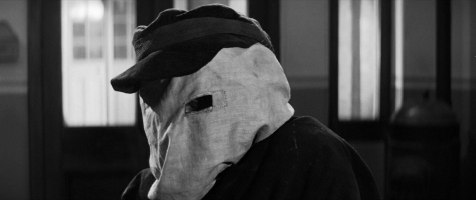The Elephant Man
Why we chose this film
Many of us will experience great discomfort watching this movie.
The initial feelings of shock and horror soon turn into pity for this poor soul. Eventually the pity will fade away as we watch the main character evolve.
Despite the many challenges he keeps facing, John Merrick remains kind and full of gratitude. We are in awe and celebrate his courage. In our eyes he is a hero. But would he want to be treated as such?
A hero chooses to take action, to show courage. John Merrick hasn’t had a choice. He was born this way.
All he tries to do is be part of society and to be treated like a human being, not some sort of animal or freak, because of his appearance.
In the face of these fates our discomfort often turns into some sort of admiration or reverence, but we forget that people like John Merrick simply want to play an integral and equal part in society.
Putting them on a pedestal might not make them feel less human, but it still keeps them at a distance.
Film Summary
This beautiful, measured and rather atypical movie by David Lynch tells the story of John Merrick, the “Elephant Man”, a Victorian-era person with disfigurements who was rescued from a cruel fairground show by the concerned physician Frederick Treves and established as a fashionable figure in London society, despite nagging fears that Merrick had simply become a grander and more acceptable form of freak attraction.
John Hurt, in complex and intricate prosthetics, plays Merrick with an unforgettably distinctive, gentle, quavering voice. Anthony Hopkins is Treves, the muscular Victorian man of science who rescues him; John Gielgud is the stern hospital chief Mr Carr-Gomm who becomes an advocate for Merrick, as does the no-nonsense matron, robustly played by Wendy Hiller. Anne Bancroft plays the stage star Madge Kendal, who takes a kindly interest.
Lynch’s depiction of Victorian London is strong, because it is not fetishised or Hollywood-ised in the usual way but simply uses existing city locations (which in 1980 were still a very good match). And Lynch, with his editor Anne V Coates, subverts the usual narrative rhythm by ending a scene on a line or moment that might normally be considered a climactic point – giving the proceedings a persistent dream logic. It is while Merrick is being exhibited on the European tour that Lynch explores the idea of something other than ordinary sympathy for him, showing us him in Tod Browning-esque relationship with other circus folk and approaching a mysterious epiphany about the universe unavailable, perhaps, to other people. The two aspects of this approach may not be entirely resolved, but it is an absorbing and satisfying drama, and Hurt’s Merrick is very powerful.
Peter Bradshaw | The Guardian












